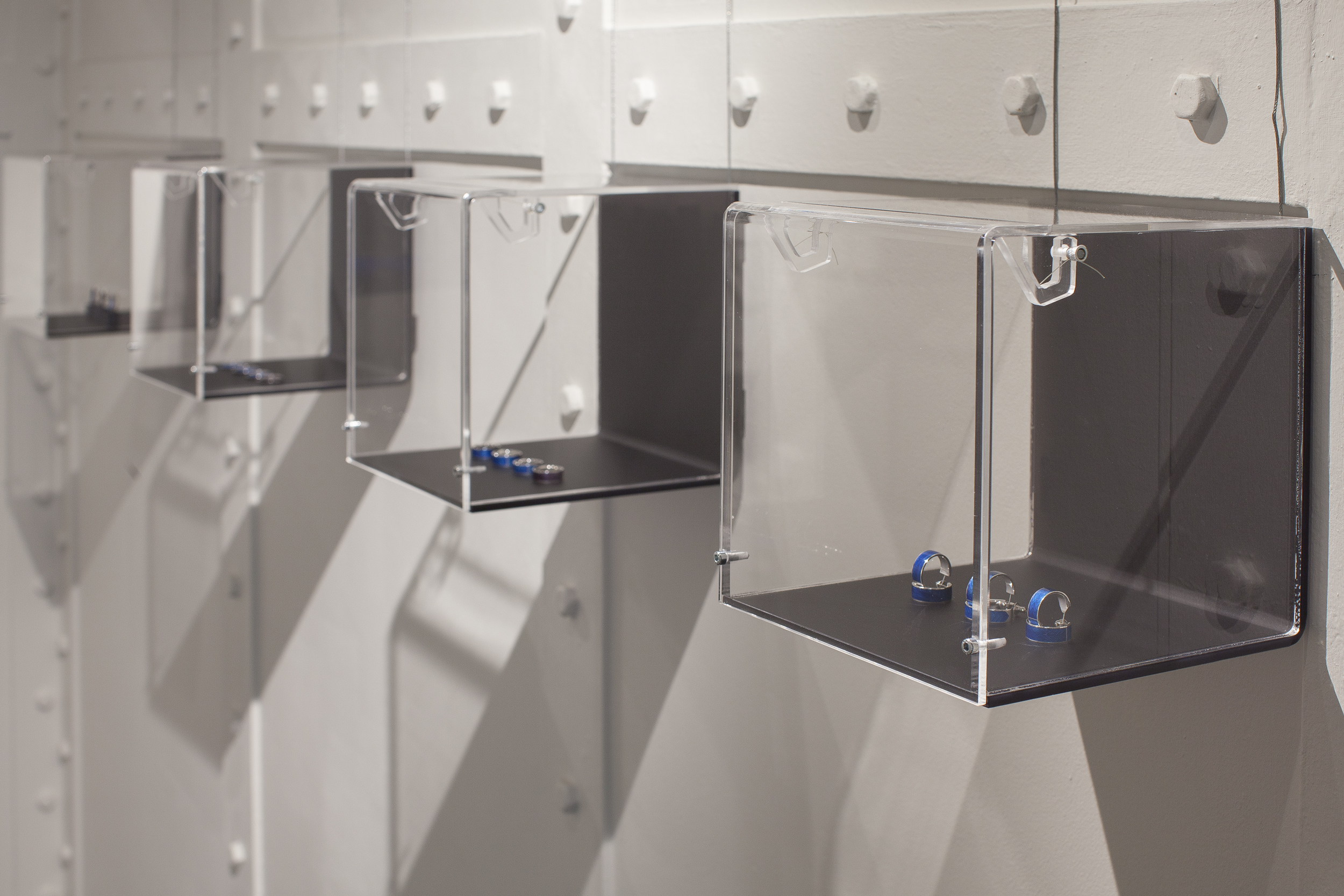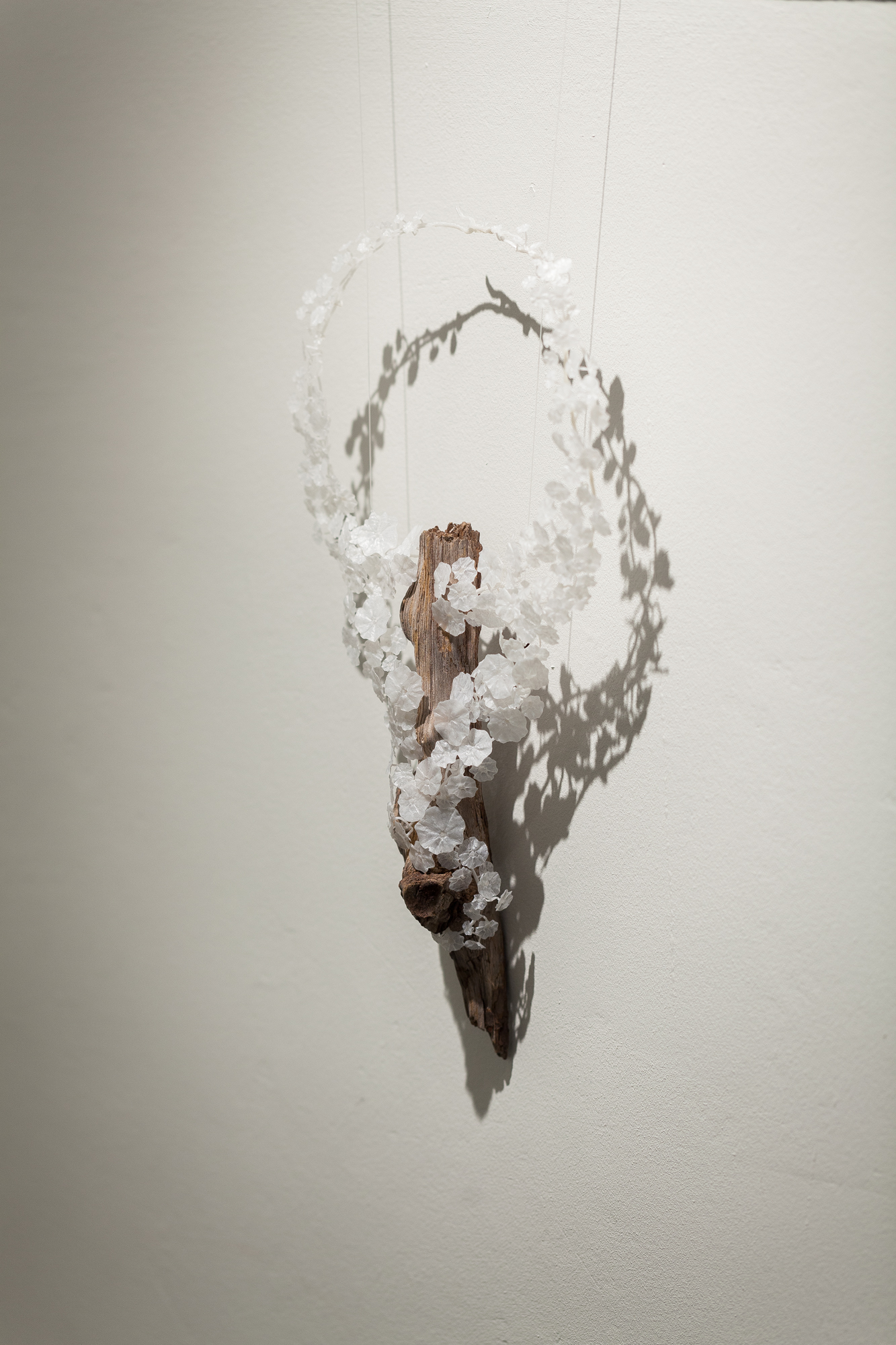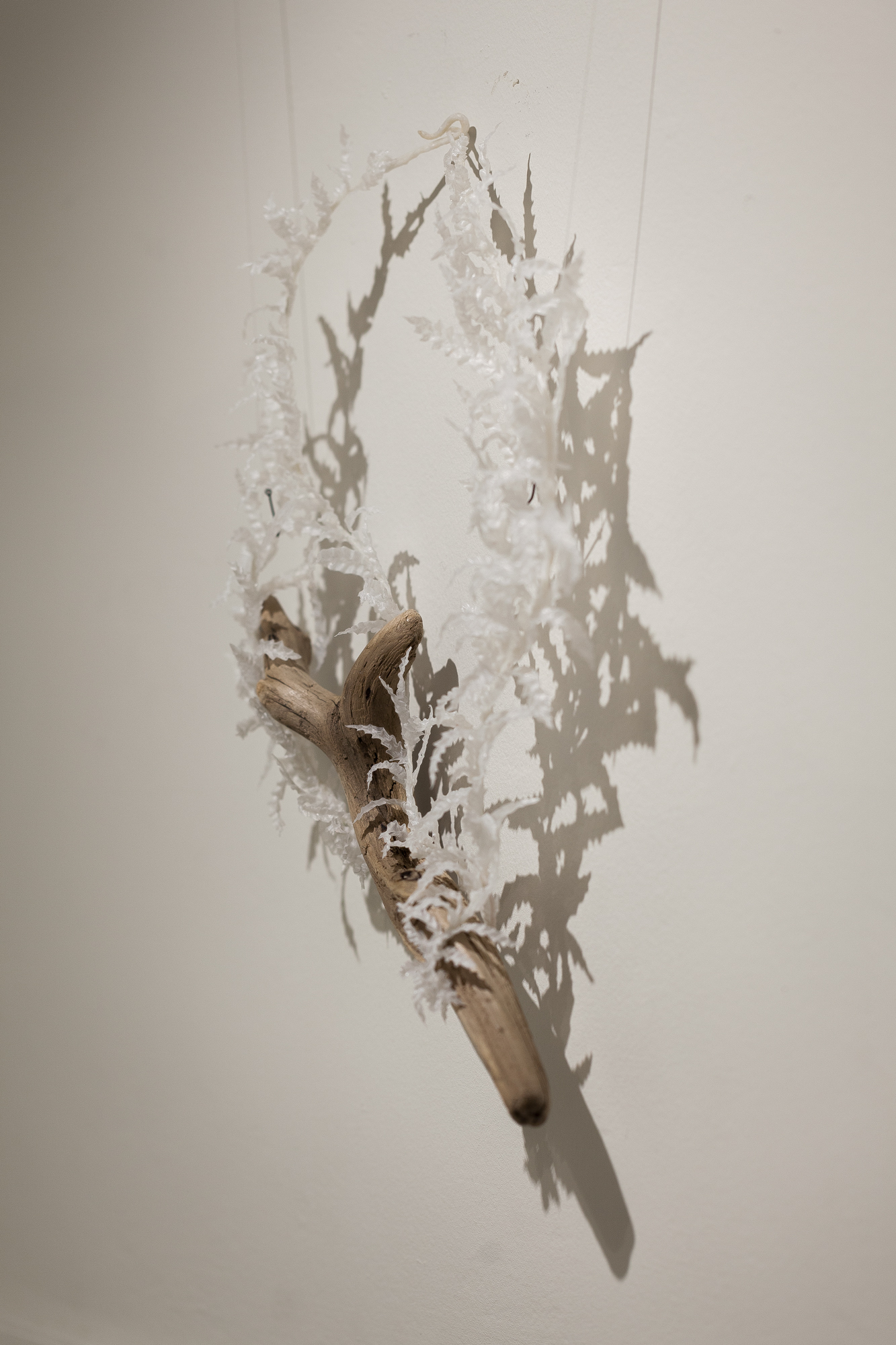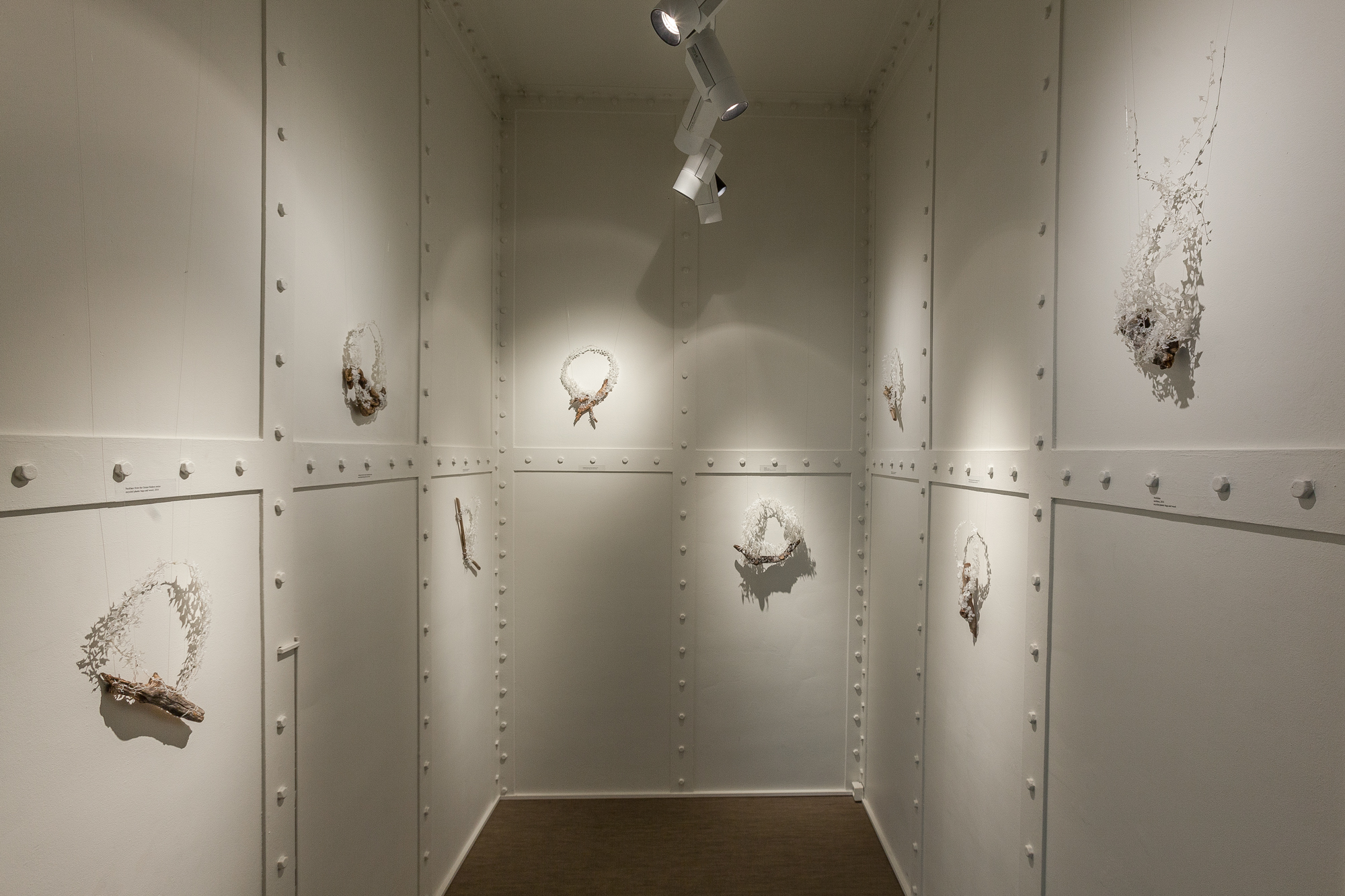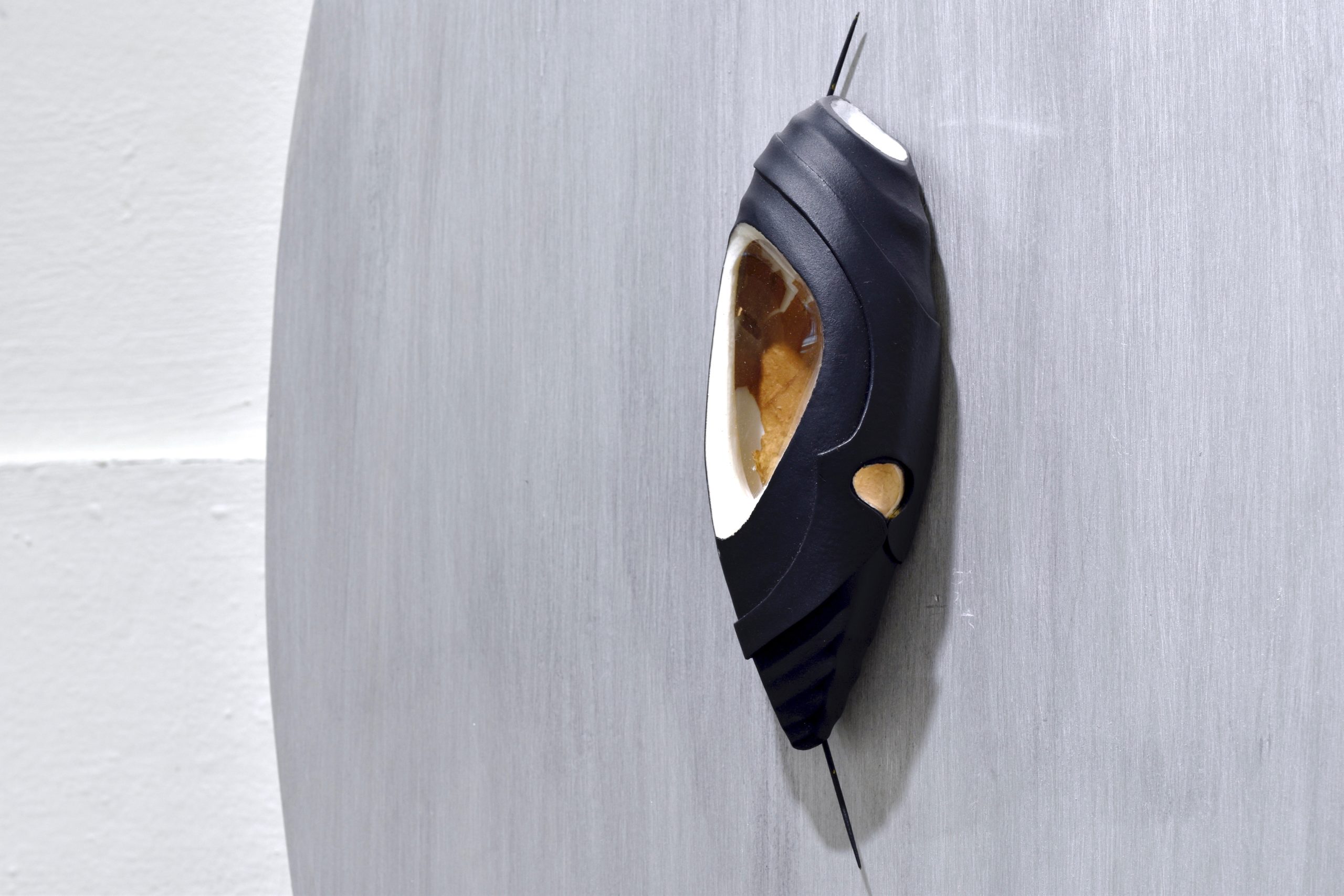


A BETTER TOMORROW is a utopian reflection on keeping something delicate and fragile, on how to get out of danger quickly today, if at all possible. Would the solution be a spacecraft that can accommodate animals, among other things, because nature alone cannot slow down climate change in the current circumstances and we will soon have no place on earth? The summary of the 2018 World Climate Conference states that in less than a hundred years, more than 60 percent of species richness has already become extinct due to the rapid development of industry. Mass extinctions will occur in 50 to 500 years if politicians do nothing urgently. The world is like a pawn of different species and animals, some with a belly full of plastic, others with space oxygen bubbles in their heads, and crooked animals compressed into a single spaceship.
3D printing that is later galvanized (including embossed characters and iridescent gemstones).
Marita Lumi graduated from the Estonian Academy of Arts in 2015 with a master’s degree in jewelry. He studied in Strasbourg, France and at the Institute of Geology at TUT, and lived in Porto, Portugal for some time. Participated in many exhibitions, been a nominee of the Young Jewelry Award in 2016 and 2017 and the winner of this award in 2018, in addition a nominee of the Estonian Gold and Watch Association’s 2017 Estonian Jewelry of the Year competition and the winner of the 2017 A-Gallery jewelry competition.
Rait Siska, Paul Villemi, Danero Toomsalu, Alo Allar Altmets helped to organize the exhibition.










